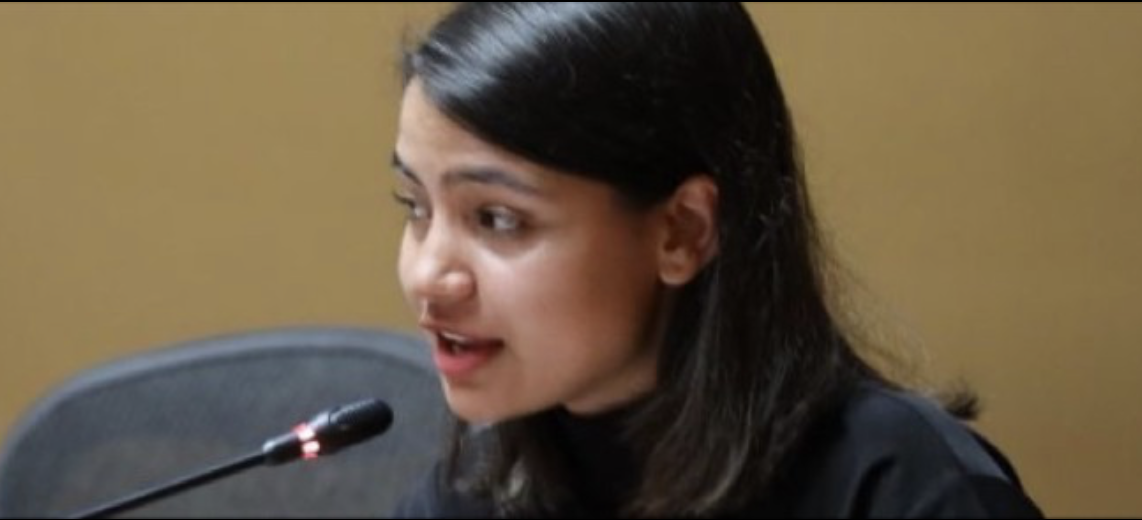
COP28 in Retrospect: Tiptoeing through Ambiguity for Hope
By Rubina Adhikari, CVF Youth Fellow from Nepal
Entering my second COP, I had a clear plan: to be an observant participant, immerse myself in negotiations from the sidelines, and absorb insights from side events as a listener. However, amidst the whirlwind of unexpected events and impromptu engagements, COP transformed into an exhilarating and unforgettable experience in a beautiful way!
The journey started with the high hopes of climate justice warriors, only to wrap up with mixed feelings. Parties agreed to chip in just over $700 million for the Loss and Damage Fund – but it’s like giving a band-aid for a broken dam. We’re talking less than 1 percent of what’s genuinely needed to combat the colossal impacts of climate change. Are we anywhere closer to victory? The final text seemed cryptic, urging a transition away from fossil fuels in a just and equitable manner but leaving much room for interpretation.
COP28 marked a pivotal moment, as the first Global Stocktake (GST) — akin to a comprehensive report card for nations on their commitments made since the Paris Agreement of 2015 — directed countries towards bidding farewell to the fossil fuel era, urging a swift transition to a “fossil-free” world by 2050. While this call resonated universally, doubts remain regarding our actual progress and trajectory. While the text acknowledged the critical path toward limiting the rise to 1.5 degrees Celsius, it felt like a recipe missing crucial ingredients. The gaps in the final text of the GST at COP28 are evident in several key areas. Firstly, the text lacks a clear commitment to a comprehensive phaseout of all fossil fuels, only mentioning the “transition away from fossil fuels in energy systems”. Additionally, the GST includes references to potentially dangerous distractions, such as carbon capture and hydrogen, raising concerns about perpetuating dependence on fossil fuels. The GST emphasizes the need for differentiated responsibilities, urging wealthier nations to lead by ending their own fossil fuel production and supporting developing countries in their transition efforts, but the ambiguous terminology used — such as that referring to ending “inefficient” fossil fuel subsidies without specifying clear criteria — raises worries over equity and continued financial support for fossil fuels. Finally, the absence of a well-defined and actionable just transition framework could hinder inclusive decision-making regarding the social and economic impacts of climate action.
However, encouraging milestones emerged, signifying progress in addressing the climate crisis. Notably, 130 nations pledged to triple global renewable energy capacity by 2030, marking a substantial leap toward cleaner energy sources. Additionally, 63 countries, including the United States and Canada, committed to slashing emissions from cooling systems by 68% by 2050, addressing a critical yet often overlooked source of emissions. The inclusion of oil and gas in the agreed text, after nearly three decades, signaled a historical departure. Discussions on a just transition framework and global recognition of emissions from air-conditioning and refrigeration reflected a growing awareness of the diversity of climate challenges, marking positive steps taken at COP28 toward a more sustainable future.
So, given the complexity and scale of the UNFCCC, how can you contribute as a young person? Well, it can be an initially overwhelming yet ultimately empowering experience. This platform offers a unique opportunity for collective action, where youth can actively engage in shaping global climate discourse. For the first time, this year, we saw the announcement and discussion of the first ever Youth Stocktake, offering a comprehensive analysis of youth inclusion, engagement, best practices, and strategies for amplifying youth participation in decision-making. Additionally, there are plans in development to formalize the Presidency Youth Climate Champion within the UNFCCC process. While the journey toward that coveted just transition may seem like an odyssey, remember, every step we take forward counts.
The process to engage meaningfully begins way in advance of the Conference itself. Start by reviewing agendas, strategizing which sessions are most relevant, and identifying key individuals or resources you wish to engage with. Consider affiliating yourself with delegations or working groups aligned with your interests to actively participate in negotiations. Building connections through networking, sharing insights on social media, and remaining adaptable to schedule changes are vital. Remember to document your learnings and prioritize self-care by taking necessary breaks. Approach the experience with enthusiasm, aiming not only to contribute but also to learn from the global conversations on climate action. This is the opportunity to make a meaningful impact by decoding information overload, fostering passion, and ensuring that the presence of the youth resonates powerfully in every climate dialogue.
Despite the setbacks, COP28 demonstrated that progress in climate action is not just a tale of deficits. The gathering echoed with vibrant discussions and pledges reflecting a global commitment to combat the climate crisis. The acknowledgment of diverse climate challenges and the intention to rectify these gaps in subsequent gatherings stood as a beacon of hope. So, fellow young changemakers, stay hydrated, stay informed, and above all, stay hopeful. The journey ahead may be long and winding, but with our vigor and consistent determination, we’re bound to carve a path toward a world that’s greener, fairer, and more sustainable for generations to come. Keep fighting the good fight – let’s make our planet liveable again!
